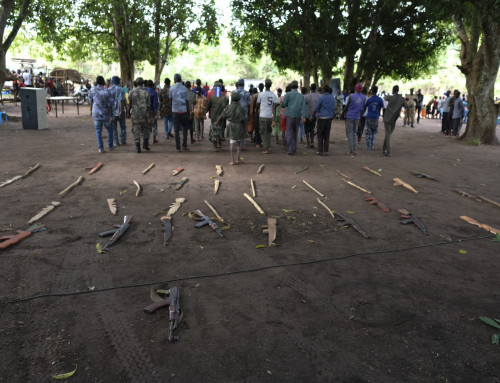On December 12 1996, the UN General Assembly created a mandate dedicated to improve the protection of children affected by conflict and asked the Secretary-General to name a Special Representative for Children and Armed Conflict.
In the years that followed, few issues have managed to galvanize the international community like the plight of children affected by war.

Click on the picture to read our publication commemorating 20 years of work to protect children affected by conflict
“When I began my work in 2012, I inherited a mandate with a strong legal framework and mechanisms to generate change for these children through the UN’s governing bodies, Member States and parties to conflict. The mandate was delivering concrete results, including promoting heightened collaboration between all who can leverage a positive impact in children’s lives,” wrote Leila Zerrougui in December.
In a text commemorating twenty years of work to protect children, she also addressed some of the current challenges faced by the international community and called for broad collaboration and support to devise innovative solutions that bring results for boys and girls.
Some achievements of the past twenty years:
Global consensus that children should not be recruited and used by national security forces in conflict, and should be protected from all other grave violations.

Over 115,000 child soldiers released since 2000 as a result of dialogue and Action Plans.

29 Action Plans signed with parties to conflict, and 11 parties delisted following full implementation of their commitments. As a result, the recruitment and use of child soldiers no longer exists in Chad, Côte d’Ivoire, Nepal, Sri Lanka, and Uganda.


Click on this picture to see all social media materials prepared for the 20th anniversary of the Children and Armed Conflict mandate.
167 ratifications of the Optional Protocol to the Convention on the Rights of the Child on the involvement of children in armed conflict, adopted in 2000.
Paris Principles adopted in 2007 and endorsed by 105 States with the aim to ensure child soldiers are treated primarily as victims, not perpetrators and that their reintegration is a priority.
Strong global action for the protection of schools and hospitals. Safe School declaration against military use of schools adopted in 2015 and already endorsed by 72 States (as of January 2018).
Strong international commitment and progress to end sexual violence against children in conflict





